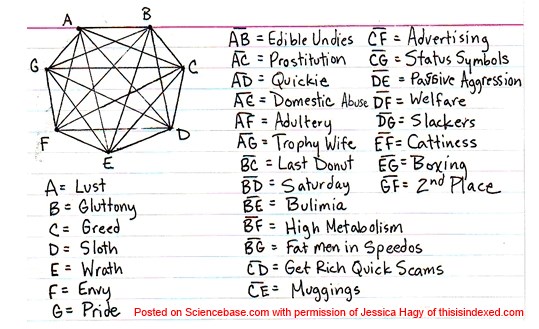 A plea from a Sciencebase reader asking for more information on new treatments for COPD, chronic obstructive pulmonary disease, led me to do a search to find the specific novel therapy the reader mentioned. Apparently, there was a news item on US TV that referred to research in Mexico.
A plea from a Sciencebase reader asking for more information on new treatments for COPD, chronic obstructive pulmonary disease, led me to do a search to find the specific novel therapy the reader mentioned. Apparently, there was a news item on US TV that referred to research in Mexico.
Well, my search turned up several new treatments for COPD. Medical News Today reported in January how combining a long-acting bronchodilator with an inhaled corticosteroid could reduce the number of exacerbations by 35%, but this was work carried out Germany, with no Mexican connection as far as I could tell. Then there were the more recent revelation that helium, the noble gas of squeaky voice fame, combined with 40% oxygen could increase the exercise capacity of patients with COPD by an average of 245%. Again, no Mexican connection, this time the research was Canadian.
A UK and Canadian collaboration has identified an inflammatory mechanism that could explain some of the most extreme symptoms and point to new treatments. Indeed, Imperial College’s Peter Barnes had shown previously that low doses of theophylline, a substance occurring in tea leaves can help relax the bronchial tubes in the lungs and render them more amenable to corticosteroid intervention than they would otherwise be.
It might be that one in ten of COPD flare-ups could be prevented by treating patients with antibiotics to rid them of the bacterium thought to cause these problems in a sub-group of patients.
COPD is the fourth leading cause of death in the US and in January this year the National Institutes of Health put up $13 million to the University of Pittsburgh to help researchers there understand better the disease and potentially find more effective treatments. COPD, some times known as chronic obstructive airways disease (COAD) is most commonly associated with smoking tobacco (you’ve got a hugely increased risk of this disease if you have smoked an average of 20 cigarettes a day for 20 years or more across your lifetime) but the disease can also arise because of coal dust and other pollutants. I say disease, but it’s actually a combination of diseases chronic bronchitis (which is inflammatory, in nature, narrows airways and increases mucus production) and emphysema (destruction of lung tissue).
Still no Mexico connection, not even with a search on NCBI PubMed… Then I received another email from the Sciencebase correspondent who revised the original note to include the word “new” it was New Mexico…not old Mexico. I should have thought of that first off, but I didn’t. However, a quick search with new included brought up the item that I suspect our correspondent had heard about.
Apparently, the Lovelace Respiratory Research Institute is collaborating with Dr Richard Crowell of the Albuquerque Veterans Administration Medical Center to begin a new study over the next three years that will enlist more than 3000 Albuquerque area residents at risk of COPD and lung cancer. Now, this isn’t quite the treatment breakthrough mentioned in the original email, but this looks like another promising lead in dealing with COPD.
 Many of the health claims of herbal medicine bear fruit for the pharmaceutical industry, leading to new drugs that are more potent and more targeted than the original remedy. In Traditional Chinese medicine there are many health claims for the likes of Ginkgo biloba and many other remedies that might bear closer scrutiny. Now, pharmaceutical chemist David Barlow and colleagues Peter Hylands and Thomas Ehrman at King’s College London have undertaken the biggest study yet of the active ingredients in TCM and used an analytical system known as a multiple decision tree technique, called Random Forest, to unearth the root of the activity of the natural products in TCM.
Many of the health claims of herbal medicine bear fruit for the pharmaceutical industry, leading to new drugs that are more potent and more targeted than the original remedy. In Traditional Chinese medicine there are many health claims for the likes of Ginkgo biloba and many other remedies that might bear closer scrutiny. Now, pharmaceutical chemist David Barlow and colleagues Peter Hylands and Thomas Ehrman at King’s College London have undertaken the biggest study yet of the active ingredients in TCM and used an analytical system known as a multiple decision tree technique, called Random Forest, to unearth the root of the activity of the natural products in TCM.

 Everyone who studies any science at school will have come across Newton’s Laws of Motion. His three physical laws explain the relationships between the forces acting on a body and the motion of that body and were first published in 1687 in his magnum opus – Philosophiae Naturalis Principia Mathematica.
Everyone who studies any science at school will have come across Newton’s Laws of Motion. His three physical laws explain the relationships between the forces acting on a body and the motion of that body and were first published in 1687 in his magnum opus – Philosophiae Naturalis Principia Mathematica. By definition the use of significant figures in measurement and value is a form of rounding. They represent the the number of digits in a number, beginning at the first non-zero digit and including any trailing zeros. For instance, 0.005746180 has 7 significant figures. All 7 of those digits are significant, if someone were measuring a distance, volume, time period or whatever and they included all those numbers as well as that final zero, you would assume that they had measured the value to seven significant figures. The next number after the final digit would not be reliable and so is not included.
By definition the use of significant figures in measurement and value is a form of rounding. They represent the the number of digits in a number, beginning at the first non-zero digit and including any trailing zeros. For instance, 0.005746180 has 7 significant figures. All 7 of those digits are significant, if someone were measuring a distance, volume, time period or whatever and they included all those numbers as well as that final zero, you would assume that they had measured the value to seven significant figures. The next number after the final digit would not be reliable and so is not included. The latest physical science news from David Bradley can also be found on the intute portal under the Spotlight. This month:
The latest physical science news from David Bradley can also be found on the intute portal under the Spotlight. This month: Sciencebase reader Toar Winter emailed with a rather intriguing question.
Sciencebase reader Toar Winter emailed with a rather intriguing question. Kleenex is out, disposable arm bands are not yet de rigeur, so what’s the alternative when you just have to sneeze or cough? Use your sleeve, that’s what. It’s the most effective way to reduce the spread of cold and flu viruses. Coughing into the open air without covering your mouth simply releases a myriad of viral and bacterial particles into the air around you. If there’s no one else around that’s not so bad, but just picture those droplets of spittle and snot flying in the video we’re going to show you here and you’ll think again.
Kleenex is out, disposable arm bands are not yet de rigeur, so what’s the alternative when you just have to sneeze or cough? Use your sleeve, that’s what. It’s the most effective way to reduce the spread of cold and flu viruses. Coughing into the open air without covering your mouth simply releases a myriad of viral and bacterial particles into the air around you. If there’s no one else around that’s not so bad, but just picture those droplets of spittle and snot flying in the video we’re going to show you here and you’ll think again.